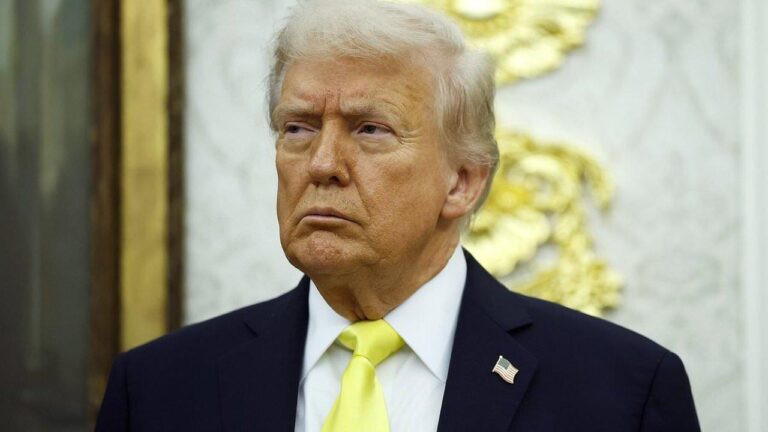As arguments unfold at the U.S. Supreme Court on November 5, President Donald Trump stands on the brink of potentially shaping legal history with a case centered on tariffs. The high-profile proceeding, closely watched by economists, policymakers, and international trading partners alike, could redefine the scope of presidential authority over trade policy. This pivotal moment underscores the broader contest over the balance of power in economic governance and the future direction of U.S. tariffs amid ongoing global trade tensions.
Trump Faces High-Stakes Supreme Court Battle Over Tariff Authority
The upcoming Supreme Court hearing marks a pivotal moment in the ongoing controversy surrounding former President Donald Trump’s tariff powers. At issue is the extent to which the executive branch can unilaterally impose or alter tariffs without Congressional approval. This case challenges the boundaries of presidential authority that have broader implications for trade policy and the U.S. economy. Legal experts highlight that, if successful, Trump’s argument could redefine the balance of power between Congress and the presidency in setting economic policy, a precedent with far-reaching consequences.
Key aspects under scrutiny include:
- The scope of the Trade Expansion Act: Does it grant the president unchecked authority over tariffs?
- Congressional intent: How clearly did lawmakers intend to limit or empower executive tariff decisions?
- Economic impact: Potential ripple effects on international trade relations and domestic industries.
| Factor | Potential Outcome | Long-Term Effect |
|---|---|---|
| Presidential Authority | Expanded or Restricted | Shifts in executive power |
| Trade Policy Flexibility | Increased control or Legislative check | Impact on tariff enforcement |
| Market Stability | Volatility or Predictability | Investor confidence effects |
Legal Experts Weigh Potential Impact on U.S. Trade Policy
Legal analysts are closely monitoring the Supreme Court’s upcoming decision, which could redefine the scope of presidential authority in setting trade tariffs. Experts suggest the ruling might either bolster or significantly constrain executive power under the Trade Expansion Act, impacting ongoing tariff policies initiated during the Trump administration. The court’s interpretation could set a legal precedent influencing how future administrations approach trade disputes and protectionism.
Key issues under consideration include:
- The extent of Congress’s oversight over presidential tariff actions
- Potential shifts in the balance of power between the executive and legislative branches
- Implications for U.S. relationships with major trading partners
| Trade Policy Aspect | Possible Supreme Court Position |
|---|---|
| Presidential tariff proclamation authority | Expanded or limited |
| Role of Congressional review | Strengthened oversight or diminished influence |
| Impact on U.S.-China trade relations | Potentially more restrictive or more negotiated |
Implications for Executive Power and Congressional Oversight
The upcoming Supreme Court case offers a rare opportunity to redefine the boundaries of executive authority in trade policy, particularly regarding the president’s unilateral imposition of tariffs. Should the Court side with the executive, it could significantly expand presidential prerogatives, allowing future administrations to bypass congressional approval on key economic decisions. This would mark a historic shift, effectively recalibrating the balance of power within the federal government and potentially ushering in a new era of expansive executive discretion on trade matters.
Conversely, ruling against the administration could reinforce Congress’s role in regulating tariffs and trade, underscoring the importance of legislative oversight. This delicate balance has implications beyond commerce, touching on:
- Separation of Powers: Clarifying limits on executive action without legislative consent
- Checks and Balances: Ensuring robust congressional scrutiny over economic policy
- Precedent Setting: Influencing future disputes involving trade and national security
Below is a simplified breakdown of possible outcomes:
| Possible Ruling | Impact on Executive Power | Impact on Congress |
|---|---|---|
| Favor Executive | Expanded tariff authority without congressional approval | Reduced oversight, limited legislative input |
| Favor Congress | Executive action checked by law | Strengthened role in oversight and trade policy |
Strategies for Businesses Navigating Uncertain Tariff Outcomes
With the Supreme Court poised to deliver a potentially game-changing ruling, businesses must brace for a landscape marked by volatility. Proactive companies are advised to diversify supply chains to avoid overreliance on tariff-affected regions, including sourcing from multiple countries or considering domestic alternatives. Maintaining fluid communication channels with customs brokers and trade experts can help firms stay ahead of sudden changes in duty rates or enforcement practices. Moreover, adopting flexible pricing models will enable businesses to absorb unforeseen tariff costs without alienating customers.
Operational agility will be key in the weeks following the court’s decision. Some enterprises are already conducting scenario planning sessions that factor in both favorable and adverse outcomes. The following table summarizes practical steps businesses can take to mitigate risks associated with uncertain tariff outcomes:
| Strategy | Action | Benefit |
|---|---|---|
| Diversified sourcing | Identify alternate suppliers outside tariff zones | Reduces exposure and supply disruptions |
| Cost forecasting | Incorporate tariff scenarios into budgets | Improves financial resilience |
| Inventory management | Adjust stock levels based on expected delays | Prevents shortages or overstock |
| Legal consultation | Engage trade law experts to interpret rulings | Enhances compliance and strategic planning |
Wrapping Up
As the November 5 Supreme Court argument approaches, all eyes will be on former President Trump’s legal team as they challenge long-standing trade policies. The case has the potential to reshape the scope of presidential authority over tariffs and impact U.S. economic policy for years to come. Regardless of the outcome, this high-profile hearing underscores the ongoing influence of Trump’s administration on the nation’s legal and political landscape, marking a historic moment in the intersection of law and trade. USA Today will continue to provide comprehensive coverage as the story develops.




